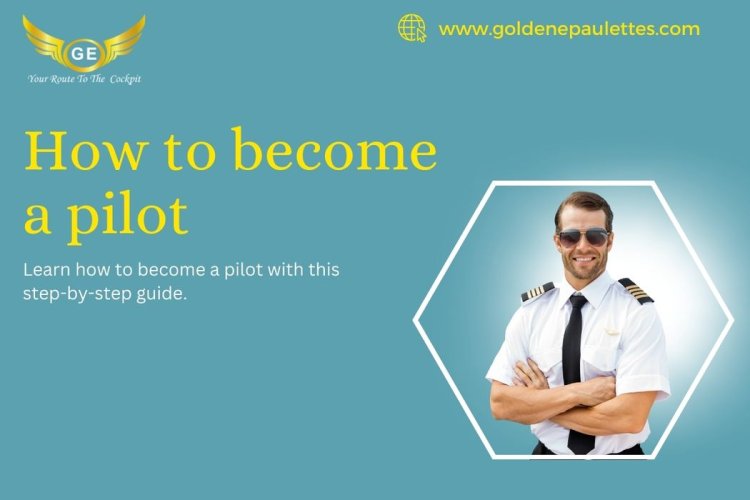The First Steps to Becoming a Pilot
Have you ever dreamed of flying but wondered how to get started? If you're curious about how to become a pilot, this guide will walk you through the essential first steps. No matter your background or experience, taking the right approach will set you on the path to achieving your aviation dreams.

The First Steps to Becoming a Pilot
Have you ever dreamed of flying but wondered how to get started? If you're curious about how to become a pilot, this guide will walk you through the essential first steps. No matter your background or experience, taking the right approach will set you on the path to achieving your aviation dreams.
1. Understanding the Requirements
Before you begin your journey, it's important to know the basic qualifications for how to become a pilot. In most countries, you must meet these requirements:
- Be at least 17 years old for a Private Pilot License (PPL) and 18 for a Commercial Pilot License (CPL).
- Hold at least a high school diploma or equivalent.
- Pass a medical examination to ensure you meet the physical and vision standards required for flying.
2. Choosing the Right Flight Training Path
There are different types of pilot training programs depending on your goals. Understanding how to become a pilot starts with choosing the right path:
- Private Pilot License (PPL): Allows you to fly for personal or recreational purposes but not for paid work.
- Commercial Pilot License (CPL): Enables you to work as a professional pilot.
- Airline Transport Pilot License (ATPL): The highest certification required to become a captain at an airline.
3. Enrolling in a Flight School
One of the most important steps in how to become a pilot is selecting a reputable flight school. Consider factors like accreditation, training facilities, instructor experience, and student success rates. Some pilots opt for university aviation programs, while others join dedicated flight academies.
4. Obtaining a Student Pilot License (SPL)
Before you can start flying, you must obtain a Student Pilot License (SPL). This involves:
- Passing a medical examination.
- Completing an application with your country's aviation authority.
- Enrolling in a recognized flight training program.
5. Ground School and Theoretical Training
An essential part of how to become a pilot is learning aviation theory. Ground school covers topics such as:
- Aerodynamics and aircraft operation.
- Meteorology and weather patterns.
- Navigation and air traffic control procedures.
- Aviation regulations and safety protocols.
6. Logging Flight Hours
Once you’ve completed some theoretical training, you’ll start flying under the supervision of an instructor. The number of flight hours required depends on the license you are pursuing:
- PPL: At least 40-50 hours of flight training.
- CPL: A minimum of 200 flight hours.
- ATPL: Requires extensive flight experience, typically 1,500 hours.
7. Passing the Written and Practical Exams
To move forward in how to become a pilot, you must pass written exams covering theoretical subjects. After completing the required flight hours, you’ll take a flight test with an examiner to demonstrate your flying skills.
8. Advancing Your Career After Training
Once you have obtained your pilot license, there are multiple career paths to explore:
- Becoming a flight instructor to gain experience.
- Working as a charter pilot or corporate pilot.
- Joining a regional airline and working your way up to a major airline.
Salary Expectations for Pilots in India
- Private Pilot: Typically unpaid (for personal use only).
- Flight Instructor: ₹24,00,000 - ₹48,00,000 per year.
- Regional Airline Pilot: ₹40,00,000 - ₹64,00,000 per year.
- Major Airline Pilot: ₹80,00,000 - ₹2.4 crore+ per year.
- Corporate/Charter Pilot: ₹56,00,000 - ₹1.2 crore per year.
Conclusion
Now that you know the first steps in how to become a pilot, it's time to take action. Start by researching flight schools, meeting the medical requirements, and beginning your training. With dedication and the right guidance, you can achieve your dream of flying and embark on an exciting career in aviation!
What's Your Reaction?

















.jpg)
